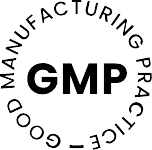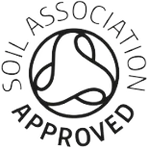The DASH Diet
When it comes to managing high blood pressure, your diet plays a crucial role. The DASH diet (Dietary Approaches to Stop Hypertension) has emerged as a powerful tool, offering evidence-based guidelines for maintaining healthy blood pressure levels.
What are the symptoms of high blood pressure?
This is the official list of high blood pressure symptoms from the World Health Organisation. It you suffer from these symptoms but don’t have a medical diagnosis of high blood pressure, go to your doctor, or to any chemists where you can have your blood pressure checked on the spot.
- Headaches
- Chest pain
- Dizziness
- Difficulty breathing
- Nausea or vomiting
- Vision changes
- Anxiety
- Confusion
- Nosebleeds
- Abnormal heart rhythm
What could raise my risk of developing high blood pressure?
High blood pressure usually develops slowly over months or years. The risk factors include:
- A family history of high blood pressure
- Getting older
- Not exercising enough
- Having overweight or obesity
- Eating a high-sodium diet
- A lack of sleep or poor sleep quality
- Drinking too much alcohol
Foods That Lower Blood Pressure
Enjoy low-fat dairy treats
Calcium can reduce blood pressure.
Incorporate low-fat dairy products like semi-skimmed milk and low-fat yogurt into your diet to benefit from their calcium and protein content. you can eat lower-fat versions of spreadable cheeses too, if you don’t overdo it. These dairy delights don’t just give you the benefit of calcium, but a host of other nutrients which can contribute to blood pressure reduction while keeping saturated fat intake in check.
Feast on fruit and vegetables
Nitrates and potassium reduce blood pressure.
Rick in nitrates and potassium, fruits and vegetables like beetroot, spinach, celery, and bananas offer natural ways to lower blood pressure. Beetroot is particularly rich in nitrates, which actively lower blood pressure. Whilst potassium has the same effect, don’t take potassium supplements unless you have been told to by your doctor, because too much potassium can affect your heartbeat. Aim for a diverse range of colourful produce to reap the full spectrum of health benefits.
Switch to whole grains
Soluble fibre reduces blood pressure.
Soluble fibre found in oats (called beta-glucans) has been linked to reductions in blood pressure. Switch from soggy processed breakfast cereals to whole rolled oats. Adding a handful of seeds like sunflower, chia, hemp and pumpkin along with some raisins or other dried fruit will make this a much tastier breakfast anyway, as well as being rich in the nutrients your heart and arteries need. Ditch the gooey white bread toast to whole grains like brown rice, wholemeal bread, and oats to boost your fibre intake and support heart health. Look out for whole grain oat crackers instead of sugary biscuits, which you can turn into a treat with a dollop of hummus or low-fat cream cheese.
Eat more garlic
Garlic has been found to reduce blood pressure if eaten every day.
Eating garlic or odourless garlic capsules daily may reduce blood pressure significantly, according to several clinical trials. It’s also been found to reduce the risk of cardiovascular “events” by as much as 40%, according to some researchers. Fresh garlic is a tasty way to make up for reduced salt in your food. If you dislike the taste, or your partner begs for mercy, you may prefer odourless garlic softgels instead.
Switch to leaner protein
Reducing fat in your diet helps lose weight, which reduces blood pressure.
Swap out fatty red meats for lean sources of protein such as chicken, turkey, fish, eggs, and beans. These alternative protein-rich foods are not only lower in calories but also help you feel full and satisfied, aiding in weight management and blood pressure control.
What Else Can Help Lower Blood Pressure?
In addition to dietary changes, other lifestyle modifications can further support blood pressure management.
Regular physical activity, stopping smoking or vaping, and keeping your weight at a healthy level are essential components of a comprehensive hypertension management plan.
Certain food supplements also seem able to help reduce high blood pressure:
- Omega 3 fatty acids
- Magnesium
- Coenzyme Q10
Foods to Avoid with High Blood Pressure
Reduce alcohol
Alcohol causes spikes in high blood pressure.
No alcohol is the best amount of alcohol. Nowadays you can buy alcohol-free wines, beers and even gin which taste pleasant and are gaining greatly in popularity as a healthier alternative. The next best choice is to enjoy alcohol in moderation only on special occasions. Government guidelines to stay below 14 units of alcohol a week are set for healthy people. With high blood pressure, alcohol is an active immediate danger to your health and you should stay well below this to prevent spikes in blood pressure and unwanted weight gain.
Cut excess caffeine
Caffeine raises the blood pressure until it is eliminated from our bodies.
Some people have a genetic profile that makes them take six times longer than others to clear caffeine from their body. While the caffeine is in you, it will raise your blood pressure.
So if you are the kind of person who has faced sleepless nights after caffeine in the evening, you need to cut right down on caffeine. If your tolerance has always been better, you may be able to tolerate up to 4 cups of coffee a day. Monitor your caffeine intake from sources like coffee, tea, coke and other energy drinks, and chocolate to maintain blood pressure within a healthy range.
Eat less salty foods
We should have no more than 1 teaspoon of salt per day (6 grammes).
Keep an eye on your salt intake by choosing low-salt options and cutting back on processed foods like crisps, sauces, and pickles. Eat fresh, whole foods whenever possible to minimise sodium intake.
Most of the salt we eat is hidden in foods. It’s not just in things that taste salty such as olives, crisps, sauces, pickles, ham, bacon and sausages. Large amounts of salt are also hidden in bread, breakfast cereals and even cakes and biscuits. Check food labels, steer clear of takeaway meals and ready meals, and make your own lower-salt versions at home. The best way to make foods tasty without the salt is to start using spices instead.
Avoid sugary and fatty foods
Sugar causes weight gain which results in higher blood pressure.
Limit your consumption of sugary and fatty foods to prevent weight gain, which can exacerbate high blood pressure. Go for nutritious snacks like fruit, yogurt, and nuts to satisfy cravings without compromising your health.
Conclusion
By adopting a heart-healthy diet rich in fruits, vegetables, whole grains, lean protein, and low-fat dairy, you can take proactive steps towards managing high blood pressure and improving overall cardiovascular health. Combined with regular exercise, giving up smoking, and weight management, these dietary modifications can empower you to take control of your blood pressure and lead a happier, healthier life.
Remember these dietary changes are to support your prescribed blood pressure medications if you take them, not to replace medical treatment. Consult your doctor for personalised recommendations and guidance on optimising your blood pressure management plan.









